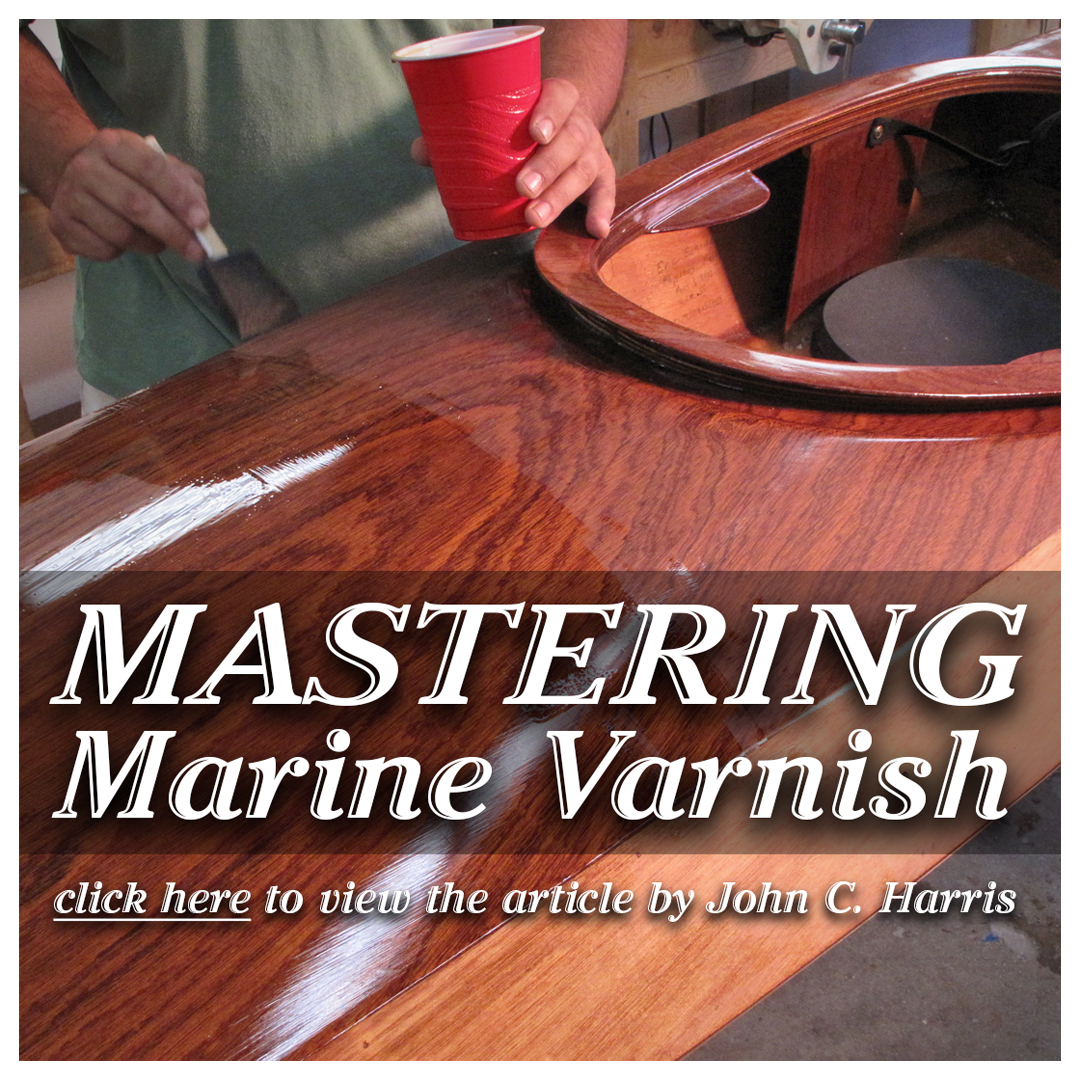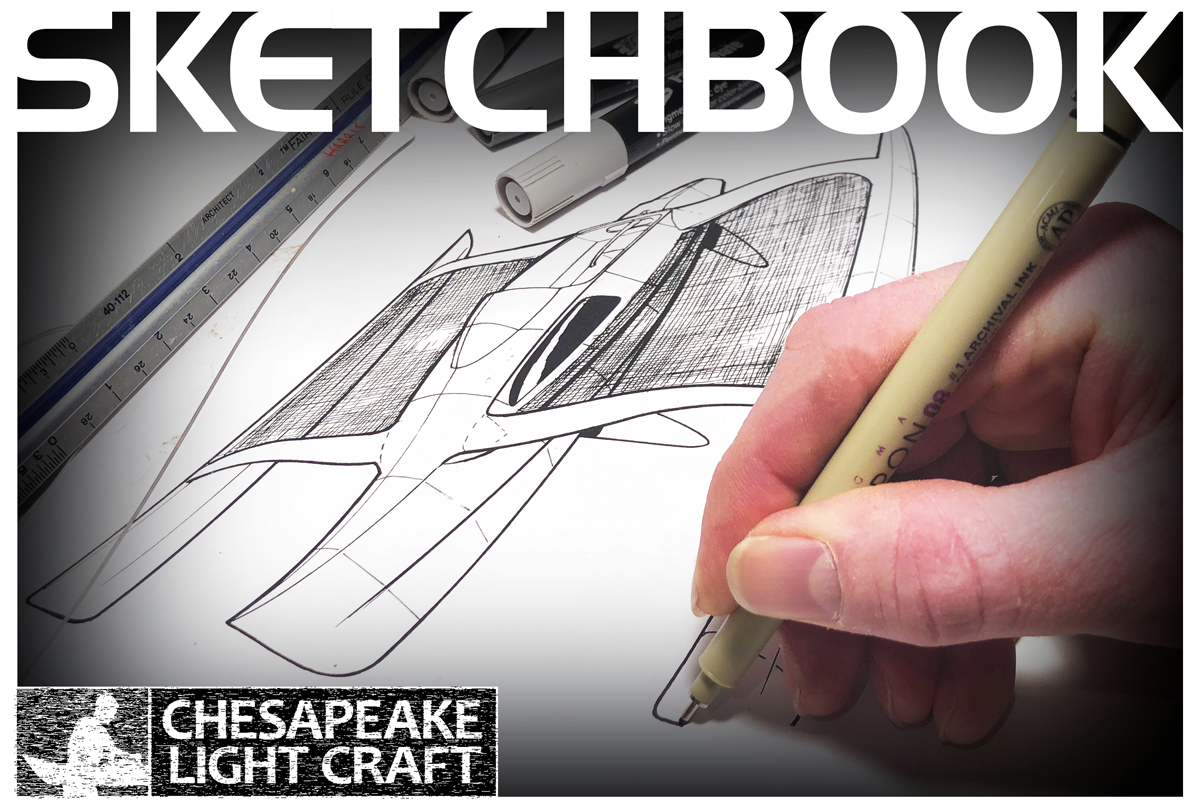Shop Tips » Finishing |
Don't Over-Sand
KAYAK BUILDING NOTES by Nick Schade
Don't Over-Sand
People complain about the amount of sanding required to make a stripper. A really good finish does require a fair degree of sanding. However, there are some things you can do to minimize the amount of sanding. Fairing starts after you have removed all the glue with a paint scraper. Use a paint scraper with a long handle. Make sure the edge of the scraper is sharp. If it isn’t use a fine file or a belt sander to put a new edge on it. With one hand put pressure over the blade, and with the other pull the scraper quickly, parallel to the strips. Holding the handle close to the boat will be least aggressive and lifting the handle away from the boat will make it more aggressive.
After cleaning off the glue do much of your fairing with a plane or spoke shave. Use one of these tools to remove the angles created by joints between the strips. Next use a fairing sander or “long board” to grind down the high spots. The goal is to knock off high spots and do a minimum of work on low spots.
Fairing is a whole-boat, whole-body operation. Don’t concentrate on one spot. This can cause low spots which is the opposite of what you are trying to accomplish. If there is blemish that needs deep sanding, either fill it in if it is small, or gradually fair the surrounding area down to until the blemish is ground out. The best tool for this may be a plane then go over the region with the fairing sander. Use a course grade of sand paper on the fairing sander, 50 or 60 grit is reasonable. Make sure you move the fairing sander parallel to strips. This will minimize the number of scratches that will show up later. Any cross-grain scratches will show up when you apply the epoxy.
Run your hand over the boat, your hand is very sensitive at detecting non-fair spots. You will feel a hump or hollow. Use a plane to knock of the tops of high spots. When you are done fairing, any saw marks in the wood should be removed. If there are any gaps between strips, now is the time to fill them.
Now with 60-grit sandpaper in a random orbital sander, sand the whole boat. You can do this by hand with sandpaper on a sanding block if you don’t have a random orbital sander. Again, don’t concentrate on one spot. Move the sander in 2’ long sweeps over the boat. Work the sander parallel to the center line and move from center line to sheer line, overlapping your strokes as you go. When you have completed one 2’ wide region, move 1’ down the boat and repeat the process, so that you are overlapping onto previously sanded wood. Move the sander rapidly and smoothly. The goal of this sanding is to remove any scratches left over from the fairing. When the surface looks uniform, vacuum the surface and use a wet rag to swell any compressed wood.
After the wood as thoroughly dried, sand it again with 80-grit sandpaper. In most cases this should be all the sanding you need. You do not want a super smooth, polished surface. Instead you want a surface free of visible scratches but rough enough for the epoxy to get a good mechanical bond. If you sand to 220 grit as you would on a piece of furniture prior to varnish, you risk having a weak bond between the wood and the fiberglass.












